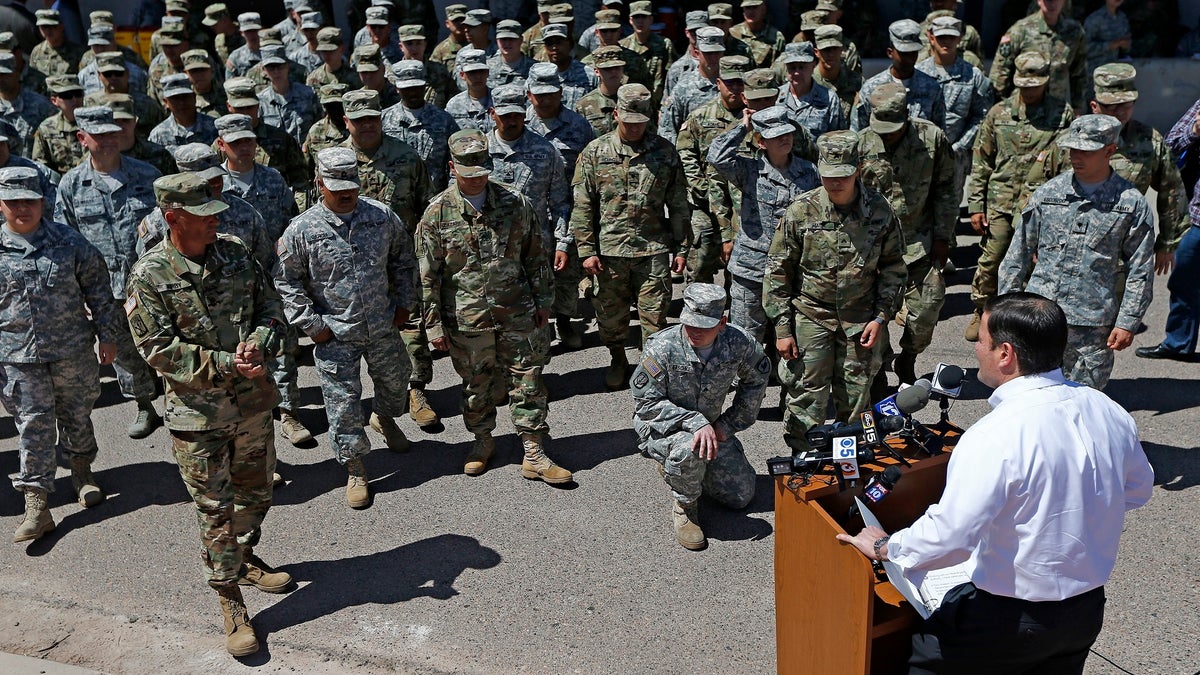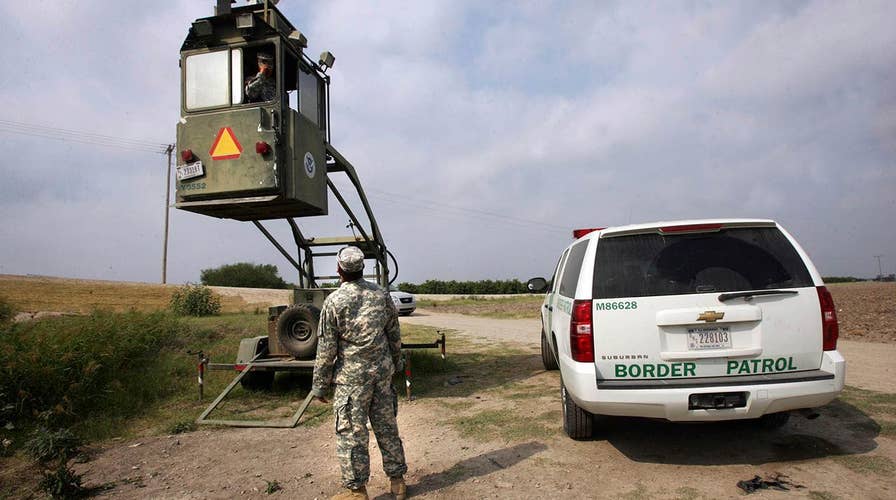How the National Guard frees up resources for border agents
National Border Patrol Council president on how the National Guard will help agents go after smugglers.
As part of his plan to curtail immigrants from illegally coming into the U.S. through the country’s southern border, President Trump has requested National Guard troops to be deployed to the area.
Trump’s move is not totally unusual: both former Presidents Barack Obama and George W. Bush also deployed the Guard to the border in 2010 and 2006, respectively.
Trump has said he wants to send between 2,000 and 4,000 National Guard troops to the southern border to crack down at the “lawlessness that continues” there.
Trump’s order invoked a federal law called Title 32, under which governors retain command and control of Guard members from their states, with the federal government paying for the deployment.
Here’s a look at how states have responded to the administration’s request.
Arizona

Arizona Gov. Doug Ducey speaks to Arizona National Guard soldiers prior to deployment to the Mexico border on April 9, 2018. (AP Photo/Ross D. Franklin)
Arizona sent about 338 Guard troops to the border, Gov. Doug Ducey, a Republican, said on Twitter.
He praised the administration’s request for troops to the border, saying it’s a “public safety” issue for Arizona.
“Anything we can do to further bolster these efforts is good news for Arizona and for our national security,” Ducey said.
According to an Arizona Department of Emergency and Military Affairs release, the troops will “provide air support, reconnaissance support, operational support, construction of the border infrastructure and logistical support.”
California
California Gov. Jerry Brown, a Democrat, agreed to send about 400 Guard troops "to supplement the staffing of its ongoing program to combat transnational crime," he said in a letter to the heads of the Departments of Defense and Homeland Security.
He said the state already has about 250 personnel for that mission across the state, including 55 at the border.
But Brown's compliance with the request came with a caveat.
"But let's be crystal clear on the scope of this mission. This will not be a mission to build a new wall. It will not be a mission to round up women and children or detain people escaping violence and seeking a better life," Brown said. "And the California National Guard will not be enforcing federal immigration laws."
New Mexico
New Mexico is sending 80 troops to the border but 250 are expected to eventually serve, the Santa Fe New Mexican reported.
“The safety of all New Mexicans is our first and foremost concern which is why our soldiers will participate in this operation,” Larry Behrens, a spokesman for Republican Gov. Susana Martinez, said in a statement, according to the newspaper.
Texas
Texas Gov. Greg Abbott, a Republican, told San Antonio radio station KTSA in April that he plans to send as many as 1,000 troops to the border, though he will start with 250.
TRUMP'S IMMIGRATION DEMANDS AND WHAT'S AT STAKE FOR 2018
“Going forward, Texas will continue to implement robust border security efforts, and this partnership will help ensure we are doing everything we can to stem the flow of illegal immigration,” Abbott said in a statement.
Abbott said the Guard will be armed but wanted to “downplay any notion that would be misinformed that our National Guard are showing up with military bayonets, trying to take on anybody who’s coming across the border because that is not their role,” according to KTSA.
Missouri
Missouri Gov. Eric Greitens, a Republican, has sent four Army National Guard soldiers and a UH-72 Lakota helicopter to the border to aid U.S. Customs and Border Protection.
"Missourians are grateful to the President for recognizing the need to secure our borders," the governor's office stated. "We are proud that Missouri troops will play a support role in guarding against terrorism, protecting Americans from cartel violence, and enforcing our immigration laws."
Fox News' Nicole Darrah and The Associated Press contributed to this report.





